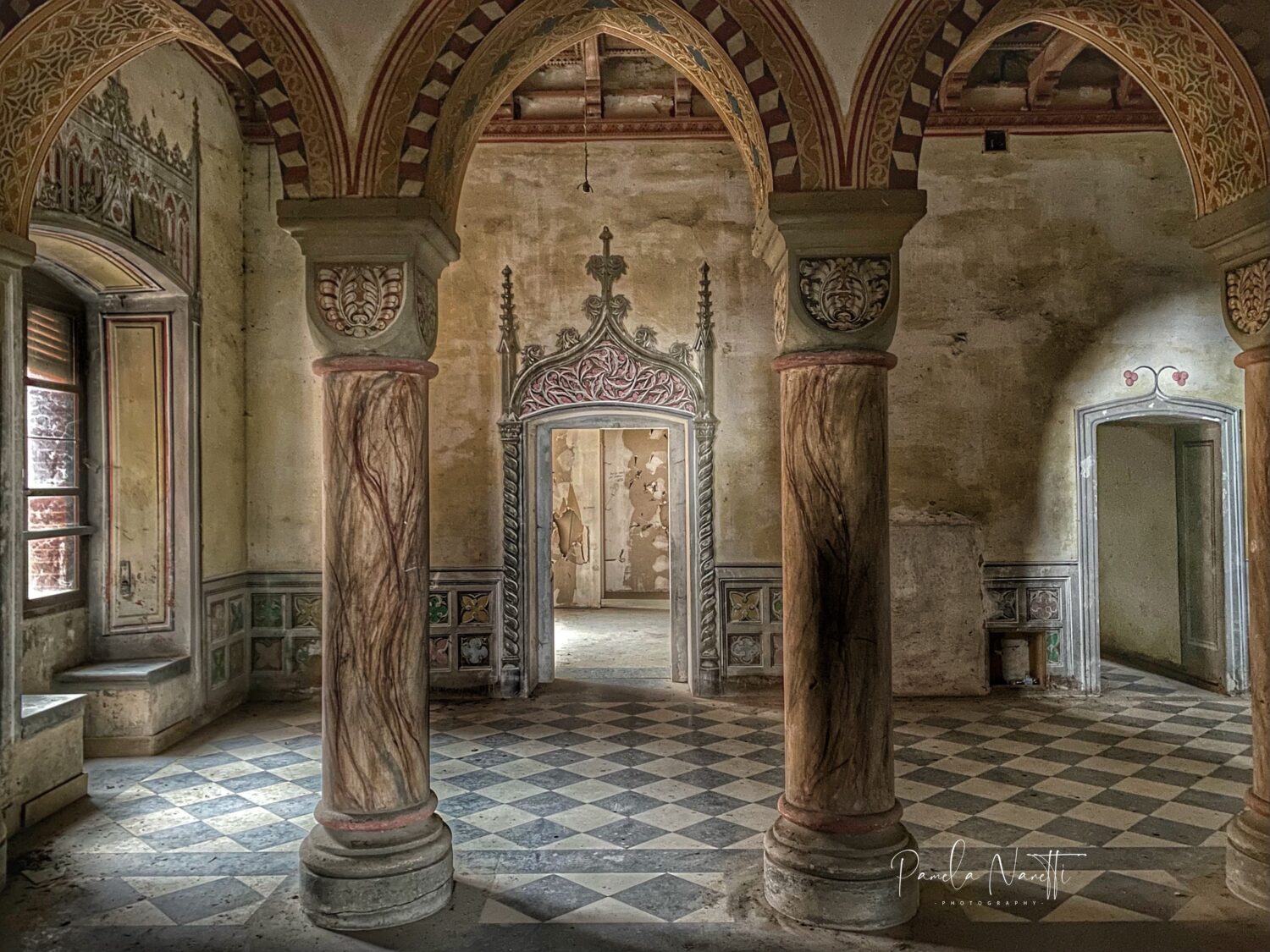Reading time: 11 minutes
With pen and paper in hand, I have been exploring decadent places for just two years now. I am originally from Bologna, but with urban exploration, I have become more of a “gypsy” meandering around Italy. I want to take you on an unusual journey, a glimpse at my internal self and different from what you might think. Opening the door to vivid imagination and fantasy, you will be my virtual companions, spectators looking on in total comfort and safety, as my tale unfolds one line after another.
We are all travelers in life, with our own journey, some carrying huge suitcases and some a small backpack.
Urban Exploration: “A Gateway Through Time”
For those who don’t know me yet, I am passionate about urban exploration, or the practice of exploring man-made forgotten or abandoned places that have sometimes been taken back by nature itself. Each location has its own history and past which I document with photographs. These buildings can be villas, castles, churches, convents, discos, industrial buildings, places that have had people who have lived in them, and walls that could speak and tell more than one story.
Entering them is like going through a time portal, where I can travel into the past, fantasizing as I trample the rubble and dust piled up on the ground in deep rest. In this infinite silence, I take refuge from my fragility and I escape from my daily life. We are all travelers in life, with our own journey, some carrying huge suitcases and some a small backpack. We must be aware that only by lightening our load can we feel alive. When we remove ourselves and embrace new experiences, perhaps we rediscover ourselves and find new passions.
I am accompanying you for the umpteenth time in my personal interpretation of urban exploration. I could define it as a cocktail made up of two fundamentals: curiosity about the unknown and passion for photography. Each trip is not just a place, it is an experience, it becomes an ever-changing emotion of what we perceive until we feel alive again.
There are many places whose beauty seems to be suspended or crystallized in time. When I enter them it is as if I am stripping myself of all fatigue and regenerating myself with hopes, dreams, hopes, and emotions that vibrate in the depths of my soul, sensations comparable to those triggered by the one I love.
On this journey, we will be in two different regions of Italy, Piedmont, and Tuscany.
Gualino Castle
On a hot, late August afternoon, I find myself in the province of Alessandria. The castle I am about to tell you about dates back to the early twentieth century and dominates the town of the same name on which it is built. An important industrialist from Biella, Riccardo Gualino, a great patron of culture and art and friend of Giovanni Agnelli, chose to have the manor built on the foundations of an ancient medieval fortress dating back to the 1600s, making it a sumptuous residence for his sweetheart. The reconstruction work lasted about 10 years.
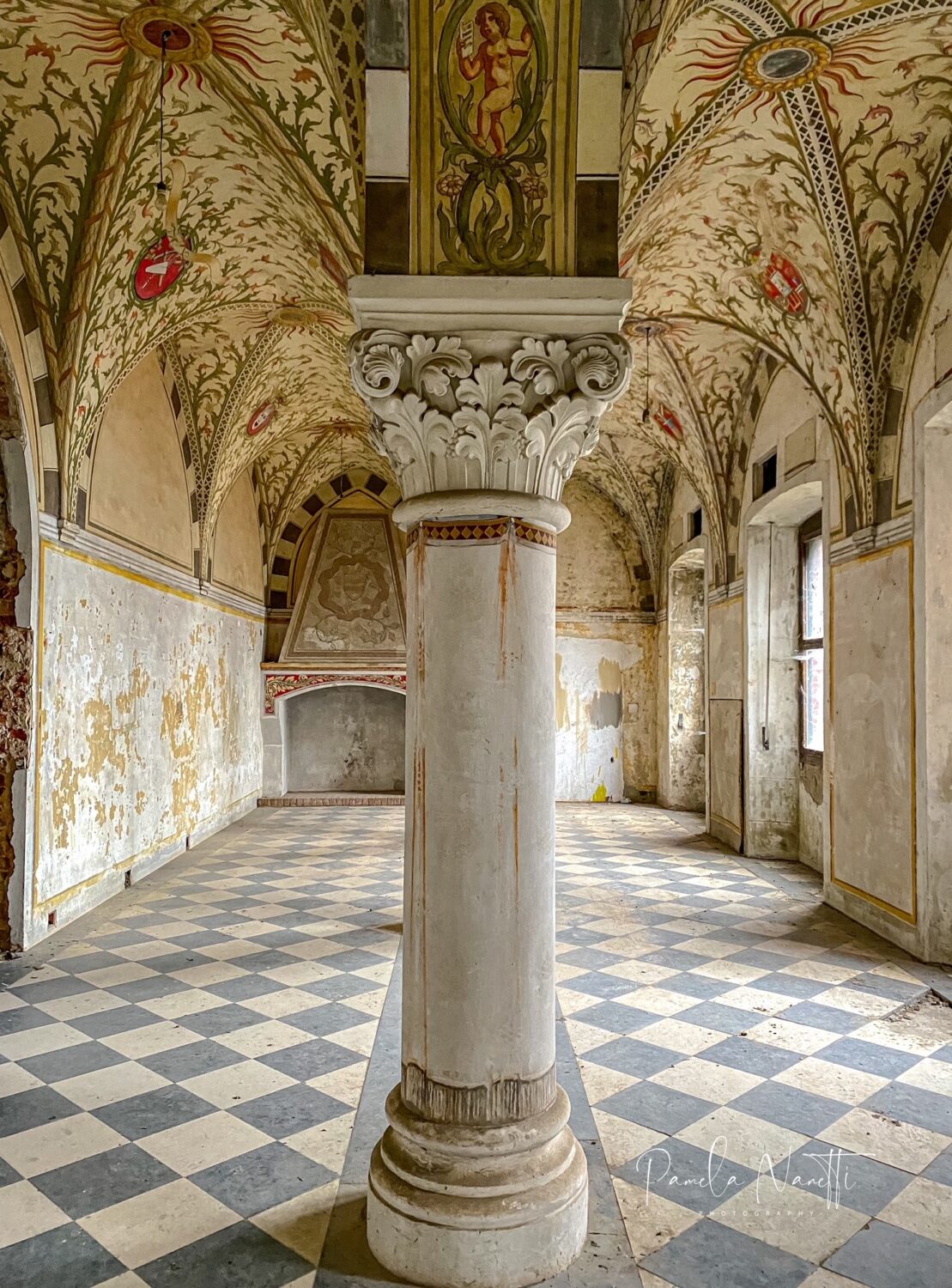
It is a building of truly impressive dimensions, between its rooms (156 in total), corridors, and balconies, all exquisitely frescoed, and 170,000 square meters of garden. At the time, the tycoon had spared no expense even on furnishing the interior in order to please his wife. It is said that once upon a time in the grand hall, in addition to being decorated with beautiful frescoes, there were also prestigious works of art, from Botticelli to Van Dyck (just to name a few) that can now be found in the Galleria Sabauda in Turin.
Unfortunately, however, the castle’s decline shortly followed. Riccardo Gualino was accused of fraudulent bankruptcy after World War I and their private residence was robbed of everything. It passed through a few hands, becoming a hospital for tuberculosis patients for years and even part of the criminal workings of the largest heroin factory in Europe.
In June of 1980, the residence was seized following a massive raid in which two laboratories and 100 kilos of heroin and morphine were found. It also went to auction at the end of 2014, but nothing came of it, and to this day, it still waits in limbo, succumbed to the relentless passing of time.
Gualino reportedly said of his Goliath of a castle, “it won’t be mine anymore, but it won’t belong to anyone else either.”
Sammezzano Castle
The next leg of our journey takes us to Reggello, Tuscany about thirty kilometers outside of Florence to a fortress likely dating back to the 9th century. In the 1600s, it was a large farm and it was from those foundations that the Castle of Sammezzano was born. It belonged to Ferdinando Panciatichi Ximenes D’Aragona who was fascinated by orientalism and decided to renovate the existing structure of the castle. He built new rooms and additions mimicking the new style that was quickly catching on in the early nineteenth century. It took about 40 years (1842-1890) to fully realize his “Eastern dream”.
An alternation of stuccos, mirrors, decorations, domes, columns, bright colors, and light effects, a dazzling fusion of techniques inspired by the Alhambra in Granada and by the Mughals in India. Anyone who has had the opportunity and the fortune of stepping foot inside (including myself, under special circumstances by the Save Sammezzano Association) becomes completely captivated by its hypnotizing beauty. Sammezzano thus manages to be both goddess and muse, a photographic set, despite its emptiness.
As you move from one room to the next, intense emotions pervade and overwhelm you, to the point of hoping that this dream will never end. This parallel dimension which, not only has transported you through time but also to distant places existing only in our most fervent imagination. Spaces with infinite allure and magical ambience such as the iridescent Sala dei Pavoni (the Peacock Room), the “atrium of columns”, the chapel, the Octagon of Mirrors, the Iris Room, the Lovers’ Room, the Byzantine Room, the Gilded Octagon, the Room of Stars, and the superb White Room.
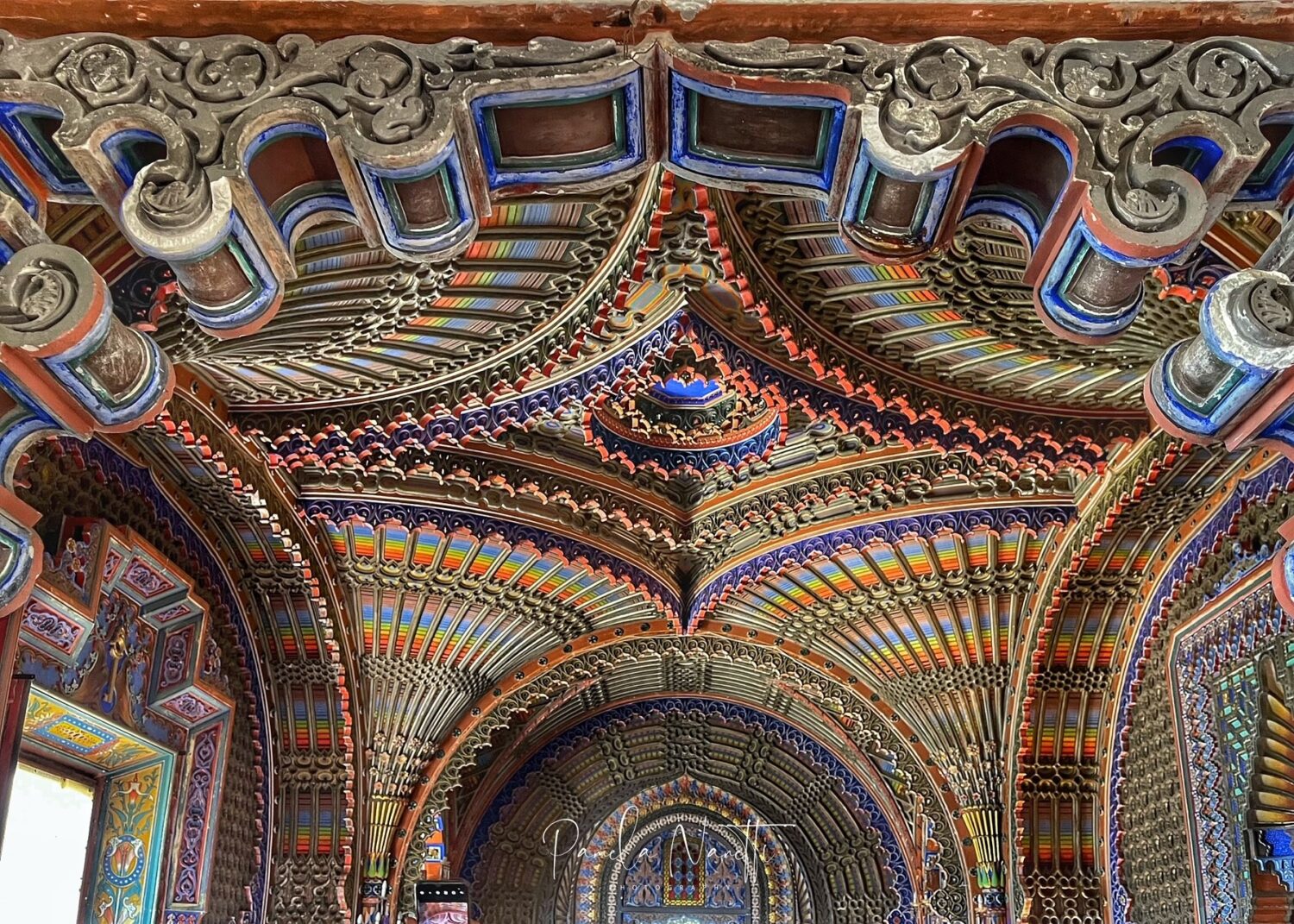
Although the reconstruction and modifications took about 40 years, it still remains the most unfinished eclectic, Eastern work in Italy.
The estate belonged to important families like the Altoviti, then to Giovanni Jacopo de Medici, until it was then sold to Sebastiano Ximenes.
After the death of Ferdinando Ximenes and his daughter Marianna, Sammezzano transferred owners various times. During the Second World War, it was looted by the Nazis. Between the years 1970-80, it became a luxury hotel and restaurant, and a location for movie sets, parties, and ceremonies. The great castle falls into a state of abandonment between real estate auctions that never achieve any results. It appears to belong to the Sammezzano Castle srl Company (an Italian-English company), which initially had an ambitious project in mind that would transform it into a resort, but to date, everything is still pending.
We’ve come to know it as one of Italy’s most-loved monuments as ranked by the non-profit Italian foundation FAI (Fondo per l’Ambiente Italiano). Its future should also be safeguarded by the Save Sammezzano Association, a non-government movement intent on raising public awareness and calling attention to its recovery. A completely vacant castle for 30 years now, Sammezzano is an Eastern dream, unique in its kind, that has earned its right to come true. While its doors may be closed, its 60-hectare garden, on the contrary, is very much open to the public. 130 exotic plants and its “twin” sequoia trees, almost 60 meters tall with a circumference of over 9 meters, can be visited freely.
I would like to thank you, my dear travel companions, as our journey together has come to an end. By now, you are getting to know me; I live and follow my passions. I don’t chase the stars, but the moon, and my heart is not for everyone.
“Make your life a dream, and a dream a reality.” Antoine de Saint-Exupéry
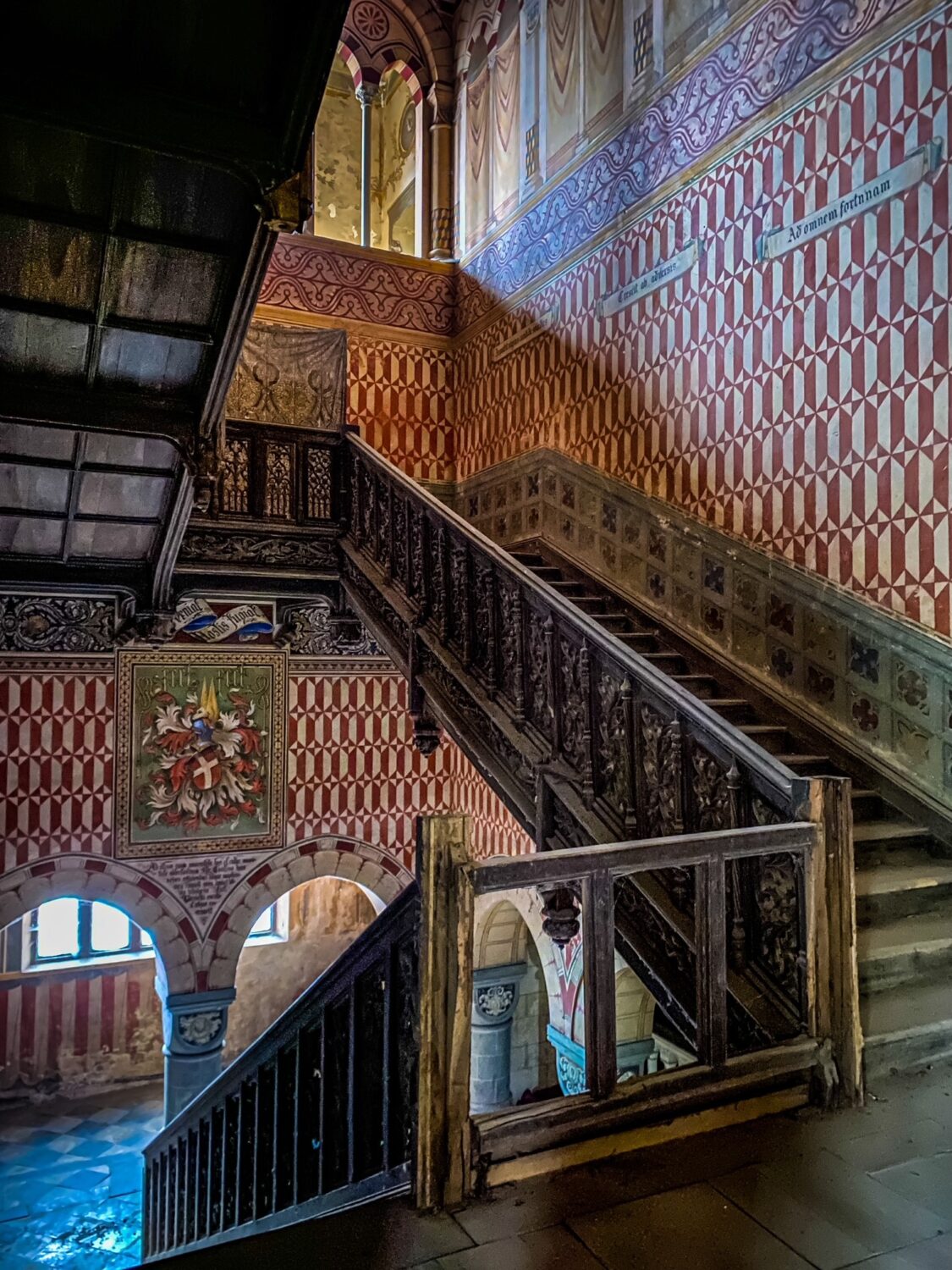
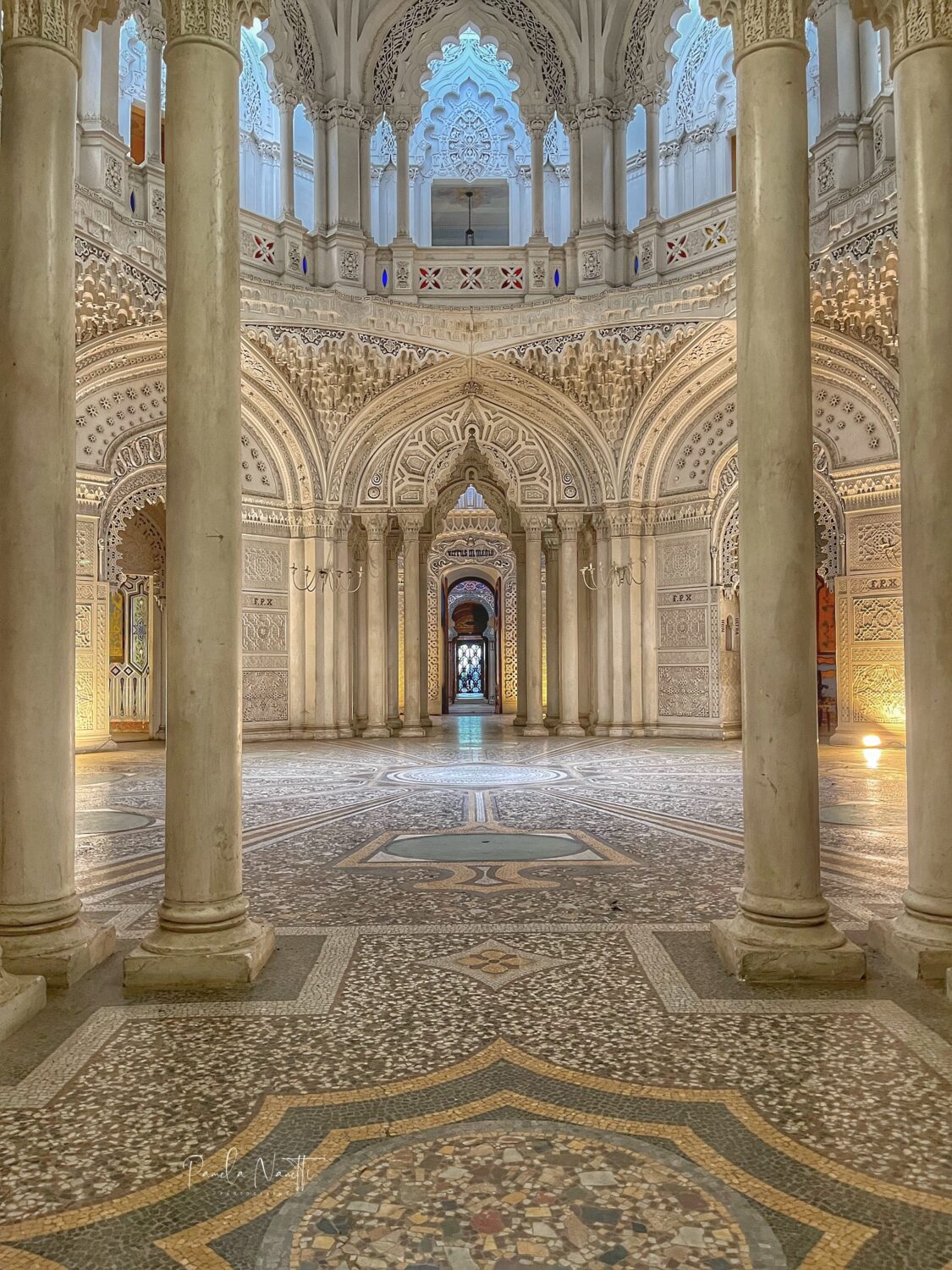
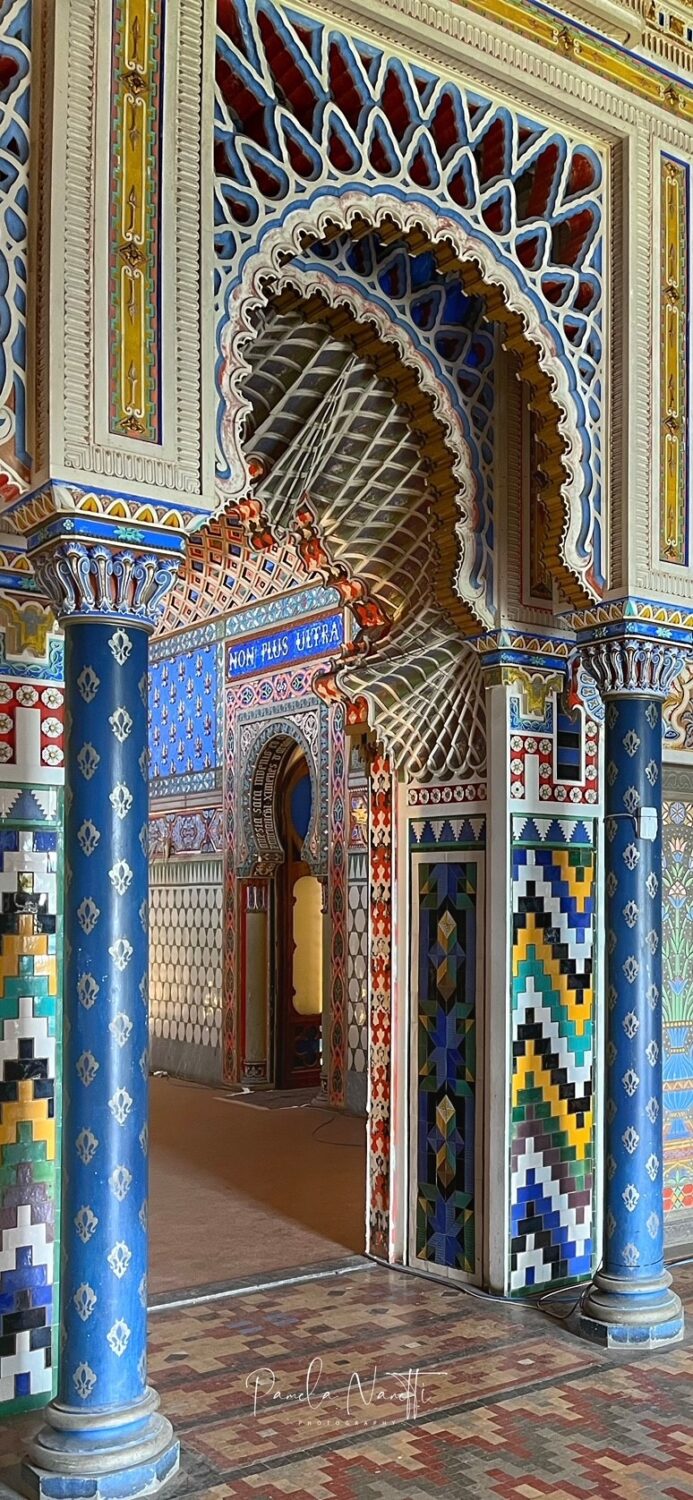
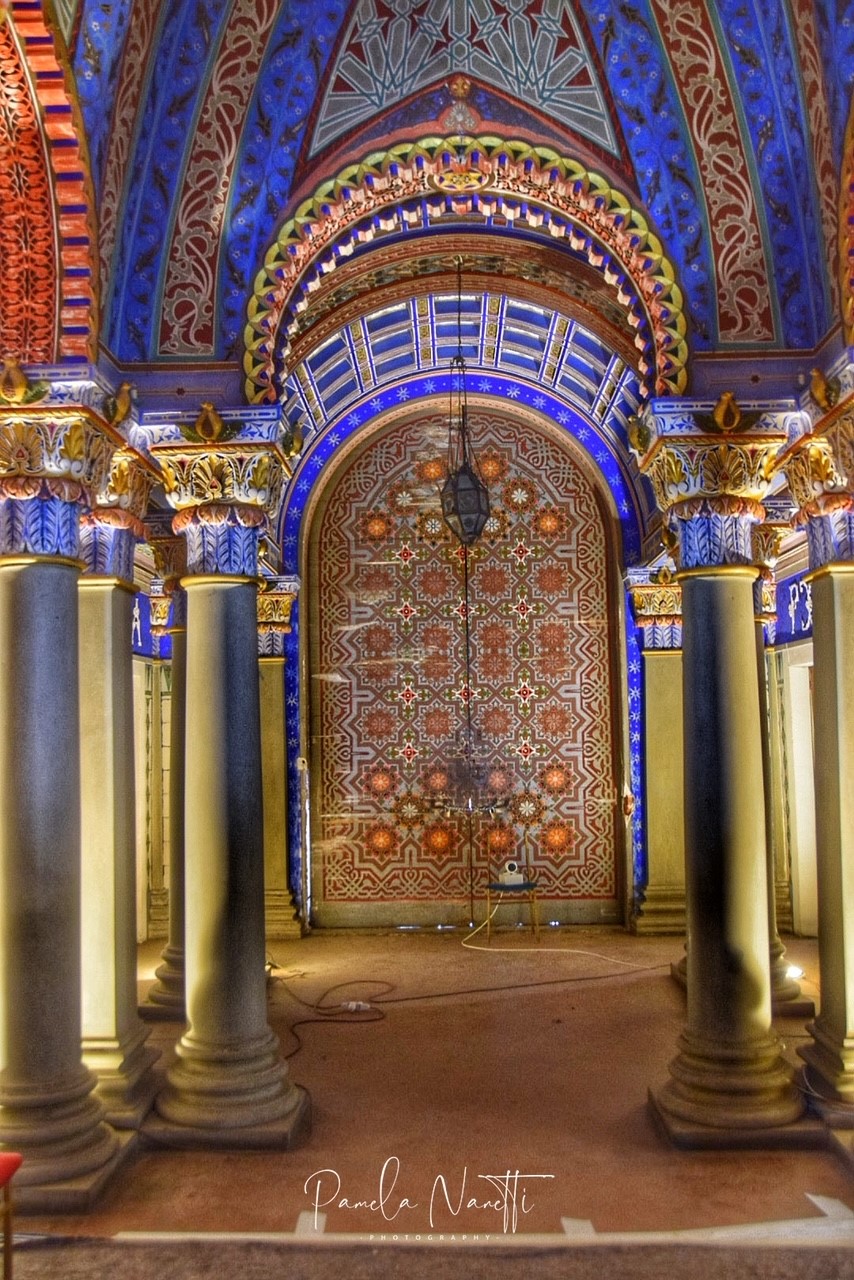
Photo copyrights: Pamela Nanetti
About the Author

Pamela Nanetti was born and lives in Bologna, and has long been linked to the Biella area through friendships and personal ties. A mother, and back office employee, she started writing by chance, as a way to get to know herself. Courageously starting a journey without being certain of its ending, in which one finds his true personality, and where the heart does not allow for calculations but survives on instinct. From this, her first book, Viaggio nel cuore di un urbexer (Journey Into the Heart of an Urbexer), was born.
For about a year or so, she has been discovering the world of Urban Exploration, Urbex, wandering amongst abandoned, unsafe, and dilapidated places that are full of history and unique architectural value and beauty. In this journey through time, she is transported to another parallel dimension. Taking advantage of her passion for photography and curiosity of the unknown, with the recklessness of a child, she enters historic homes, castles, and old decaying ruins that have been taken back by nature. Their existences forgotten, invisible, hidden in the shadows, and crystallized in time.
Intrigued by this unusual hobby, even the newspaper La Stampa, decided to dedicate space within its pages to her and now, thanks to a recent collaboration with the Eco di Biella newspaper, she has the opportunity to share these personal experiences with a wider audience.
Photographing these locations returns them to their original splendor and is an intimate way to express emotions and sensations, like a love letter to the one you just can’t seem to forget. A collection of photographs and experiences that I document piece by piece.
..."I was picking through the smashed houses in my heart, and rebuilding on the ruin." (D. Roberts - Shantaram)
Continue reading more by this author.

